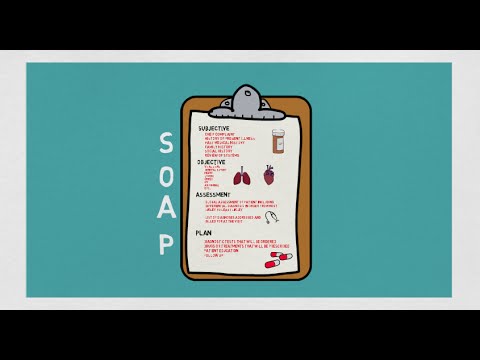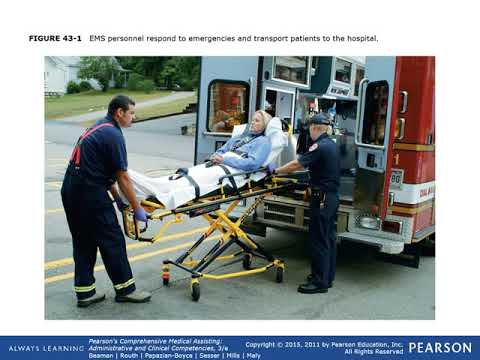Soap Note Examples for Medical Assistants
Contents [show]
This post provides soap note examples for Medical assistants These examples can help you understand how to write a SOAP note.
Checkout this video:
Soap notes: what they are and why they’re used
SOAP notes are a type of progress note that contains specific information about a patient, including a summary of the patient’s condition and treatment. SOAP notes are commonly used in healthcare settings to document patient progress, diagnoses, and treatments.
SOAP notes are an important part of the medical assistant’s job. They help to ensure that all members of the healthcare team are on the same page with regards to a patient’s care. SOAP notes also help to improve communication between Medical Assistants and other members of the healthcare team.
How to write a soap note for a medical assistant
A SOAP note is a progress note that contains specific information about a patient that is written by a doctor or other medical professional. The SOAP note format is usually something like this:
Subjective: Patient presents with X symptom
Objective: Doctor observes X sign
Assessment: Doctor diagnoses X condition
Plan: Doctor prescribes X treatment
The benefits of using soap notes
There are many benefits to using soap notes when documenting patient care. Soap notes provide a concise and standardized documentation of patient care, which can be very helpful when providing care for multiple patients. In addition, soap notes can help to improve communication between medical professionals, as well as providing a way to track patient progress over time.
The importance of accuracy when writing soap notes
As a medical assistant one of your main responsibilities is to keep accurate and up-to-date patient records. This includes writing soap notes for each patient visit. Soap notes are a type of progress note that is commonly used in healthcare settings to document the details of a patient’s diagnosis, treatment and follow-up care.
It is important to be as accurate as possible when writing soap notes, as this information will be used to make decisions about a patient’s care. Inaccurate or incomplete soap notes can lead to misdiagnoses, incorrect treatments and other serious problems.
Here are some tips to help you write accurate and complete soap notes:
1. Make sure you understand the format of a soap note before you start writing. Most soap notes include four sections: Subjective, Objective, Assessment and Plan.
2. Take your time when writing the note. Rushed notes are more likely to be inaccurate or incomplete.
3. Be sure to include all relevant information in each section of the note. For example, in the subjective section you should include details about the patient’s symptoms and how they are feeling.
4. Use clear and concise language throughout the note. Avoid medical jargon if possible.
5. Double check your work for mistakes before you submit the note. Inaccurate or incomplete information can lead to serious problems for patients, so it is important to be as accurate as possible when writing soap notes.”
How to avoid common mistakes when writing soap notes
SOAP notes are a common charting method used by medical assistants In order to write effective SOAP notes, it is important to avoid making common mistakes.
One common mistake is not documenting the patient’s chief complaint. The chief complaint is the reason why the patient is seeking medical attention and should be included in every SOAP note.
Another common mistake is failing to document the patient’s past medical history. This information can be vital in helping to treat the patient and should be included in every SOAP note.
Another mistake that is often made when writing SOAP notes is not including all of the relevant information about the patient’s current condition. This information should include the location, intensity, and quality of any pain the patient is experiencing as well as any other symptoms that are present.
Finally, another common mistake made when writing SOAP notes is not documenting the treatment that was provided to the patient. This information should include both the medication that was prescribed and any other instructions that were given to the patient.
Tips for writing soap notes
One of the most important duties of a medical assistant is to keep accurate and up-to-date records of patient care. Soap notes are an essential part of this process, and it’s important to know how to write them effectively. Here are some tips:
Be clear and concise: Soap notes should be easy to read and understand. Avoid using medical jargon, and make sure all abbreviations are clearly explained.
Include all relevant information: Make sure your soap notes include all pertinent information about the patient’s condition, treatment and progress.
Use a standard format: There is no one “right” way to format soap notes, but using a standard format will make it easier for you to find information when you need it.
Date and time each entry: This will help you keep track of the patient’s progress over time.
Get signatures from patient and physician: This shows that the patient has been made aware of their condition and treatment plan, and that the physician has approved it.
How to use soap notes to improve patient care
As a medical assistant you will often be responsible for documenting patient visits using what are called “soap notes.” Soap notes are a specific format that allows you to document important information about a patient’s visit in a clear and concise way. In this article, we will provide some tips on how to use soap notes to improve patient care.
One of the most important things to remember when using soap notes is to be as specific as possible. Include as much detail as you can about the patient’s condition, symptoms, and response to treatment. This will help the doctor or nurse providing care to the patient to have a clear picture of what is going on.
Another tip is to use abbreviations sparingly. While abbreviations can save time, they can also lead to confusion if they are not used correctly. If you are unsure about an abbreviation, it is best to spell it out in full.
Finally, remember to date and sign each soap note that you create. This will ensure that the information in the soap note is accurate and up-to-date. By following these tips, you can use soap notes to improve patient care and documentation.
The future of soap notes
While there is no one definitive answer to this question, there are some common themes that emerge when experts are asked about the future of soap notes. One common thread is the increasing use of electronic health records (EHRs), which are likely to replace paper-based records in many healthcare settings. This could lead to changes in the way soap notes are used and recorded, as EHRs offer new capabilities for storing and sharing information.
Another common theme is the need for more standardization in soap notes. At present, there is no one standard way of format or content for soap notes, which can make it difficult for medical assistants to know what to include. Some experts believe that more guidance on format and content would be helpful, so that all medical assistants can be sure they are covering all the important information in their notes.
Finally, some experts believe that the future of soap notes lies in their ability to be shared electronically between different healthcare providers. This would allow for a more coordinated and cohesive care experience for patients, as different providers would have instant access to each other’s notes on a patient’s condition.
How to make soap notes work for you
Soap notes are a key part of the medical assisting world. They act as both a record of the care you’ve provided and a means of communication with other members of the healthcare team. But what exactly goes into a soap note?
Here’s a quick rundown:
-Subjective: This is where you’ll record the patient’s symptoms, complaints, and observations.
-Objective: Here, you’ll document the findings from your physical examination and any diagnostic tests that have been performed.
-Assessment: This is your diagnosis or working diagnosis, based on the information in the subjective and objective sections.
-Plan: This is your plan for treatment, which may include medications, therapies, referrals, etc.
Soap notes: a valuable tool for medical assistants
Soap notes are a valuable tool for medical assistants. They help communicating with other members of the healthcare team, document patient progress, and track treatment plans. Soap notes can be used for both individual and group visits. Here are some examples of how to use soap notes effectively in your work as a medical assistant
When documenting an individual visit, include the date, time, patient’s name, reason for visit, and your assessment. For example:
9/10/18
11:00 am
Ms. Smith
Fever, sore throat
Assessment: Ms. Smith is a 38-year-old female who presents with a fever of 102°F and a sore throat. She reports that her fever began yesterday and her throat has been sore for two days. She has not had any vomiting or diarrhea. She is generally feeling tired and achy. Her temperature is taken orally with a digital thermometer and her blood pressure is 120/80 mmHg. She is alert and oriented times three. Her throat is erythematous and there is tenderness on palpation of her cervical lymph nodes.”






